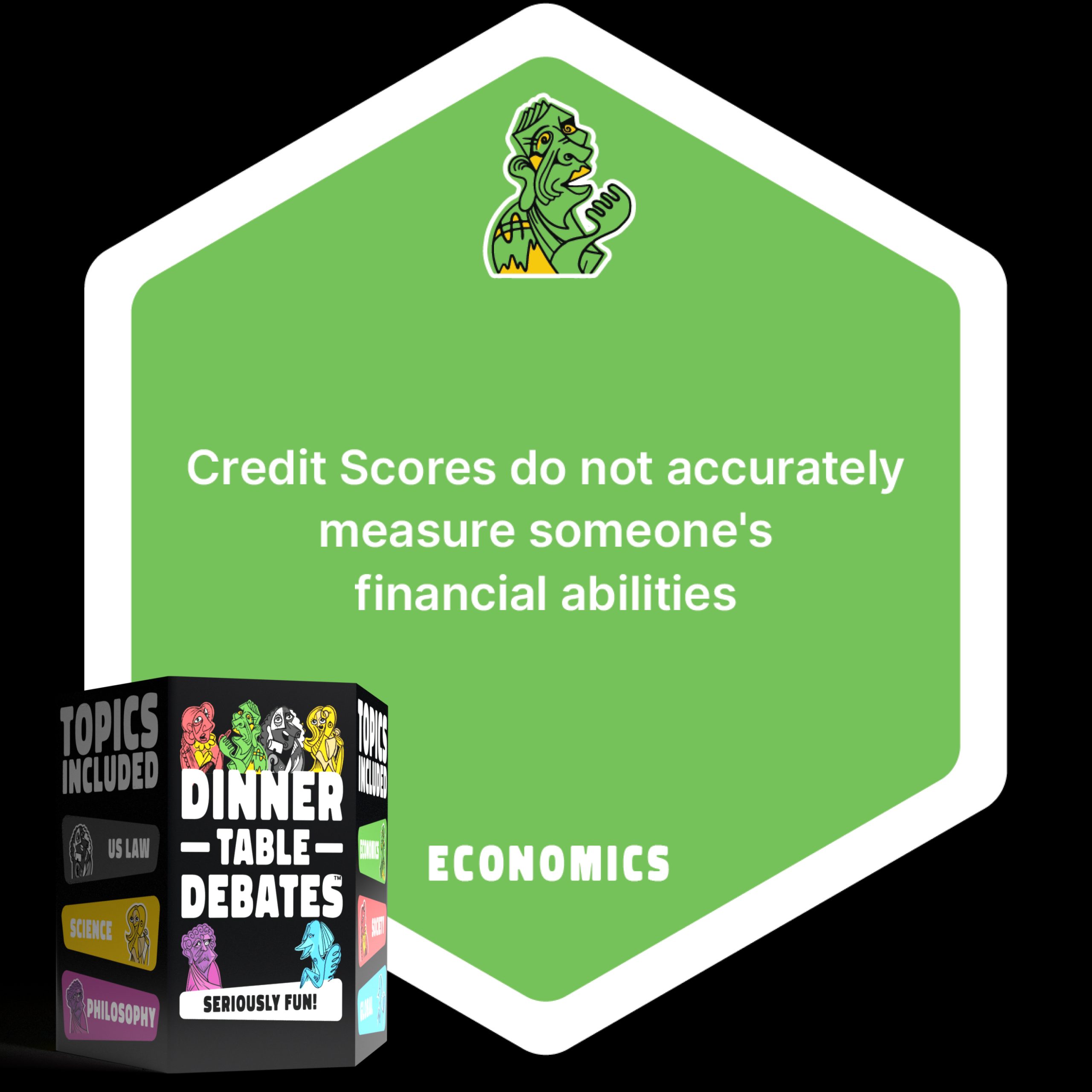Have you ever wondered why some schools have state-of-the-art facilities while others are struggling just to provide basic supplies? How many teachers do you know who are spending their own money to stock their classrooms? Or why a child's zip code can often predict how much they’ve learned in school? These questions touch on a debate that's been raging in the U.S. for decades: Shouldn't all schools get the same amount of money per student, no matter what town they're in?
Welcome to your Dinner Table Debates Daily Deep Dive where we explore real topics from our decks, and give you everything you need to debate, in under 10 minutes. Today's topic is "All childhood education in the U.S. should be equally funded, regardless of location" and comes from the Society category in our Full Size Essentials Collection deck. Let's Dig In.
Historically, schools have been primarily funded through local property taxes, a system that dates back to the 19th century. This means that schools in wealthier areas typically have more resources than those in poorer neighborhoods. But people noticed. So the Elementary and Secondary Education Act of 1965 was introduced to provide federal funding to help balance this inequity and currently provides 13.6% of funding for public K-12 education.
Today, according to the National Center for Education Statistics, the average per-pupil spending in the U.S. is about $17,280 per year, with federal, state, and local governments providing $878.2 billion. However, this varies widely by state and district. For example, New York spends an average of $24,040 per student, while Utah spends just $7,628.
Education is often seen as the great equalizer in society. The quality of a child's education can have lifelong impacts on their career prospects, earning potential, and overall quality of life. When educational opportunities are imbalanced, it can continue and even worsen the social and economic inequalities that already exist.
Now, let's debate!
Agree (All childhood education should be equally funded):
1. Equal funding would help level the playing field for all students. A 2018 study by EdBuild found predominantly white school districts receive $23 billion more per year than districts primarily serving students of color, despite the fact these districts educated a similar number of students.
2. Equalizing funding could improve overall educational outcomes. Research from the Learning Policy Institute shows states that have reformed their school finance systems to be more uniform across districts have seen significant increases in student achievement.
3. Equal funding aligns with the principles of equal opportunity that the U.S. was founded on. The 14th Amendment's Equal Protection Clause was shown to apply to education, as in the well-known court case Brown v. Board of Education that ruled that racial segregation in public schools what not allowed.
Disagree (All childhood education should not be equally funded, regardless of location):
1. Different areas have different costs of living, operating expenses, and number of students. For example, it's generally more expensive to run a school in New York City than in rural Kansas, so equal funding might not translate to equal resources. For that reason, school funding in Kansas was $8.2 billion for about 500,000 students, while NYC public schools received $39.4 billion for 1.1 million students.
2. Local control of school funding allows communities to prioritize education if they choose. In the 2018 midterm elections, voters approved about 77% of local school tax measures, showing a willingness to invest in local education without a need for more federal funding.
3. Some students require more resources than others. For instance, students learning English as a second language often need additional support, which can prove to be more costly but can be prioritized locally as needed.
Now, let's explore some rebuttals.
For the first "Agree" point about leveling the playing field, a rebuttal might go: While equalizing funding might seem fair, it doesn't account for the different issues faced by different communities. A one-size-fits-all approach might actually disadvantage some students by not providing enough resources to overcome their existing challenges.
For the third "Disagree" point about differing student needs, you could argue: A truly equitable system would take these differences into account. Equal funding doesn't mean an identical monetary amount for every student, but rather a system where every school has the resources it needs to provide a quality education to all its students, regardless of their specific needs.
To sum up, the debate over equal funding for education touches on fundamental issues of fairness, opportunity, and the role of education in society. There are valid points on both sides, highlighting the need for careful consideration of how we fund our schools and what true educational equity looks like in this country.
Some steps are being taken to address funding disparities. For example, in 2019, California implemented a new formula that directs more money to districts with higher proportions of low-income students, English learners, and foster children. Meanwhile, lawsuits challenging school funding systems have been filed in numerous states, but are being met with varying outcomes.
Curious to explore this topic even further? When you're playing Dinner Table Debates at home, the Agree side gets to set the stage and frame the debate. This means they get to define the terms, context, and interpretation, leading to a fresh and engaging discussion every time. So, if you’re diving into the debate on “All childhood education in the U.S. should be equally funded regardless of location,” here are a few thought-provoking ways Agree could shape the conversation:
By exploring these angles, you can uncover new dimensions of the topic and have fun doing it.
If you enjoyed our deep dive, you can debate this topic and many others by getting your own Dinner Table Debates deck at DinnerTableDebates.com. It's a unique game because every round starts with randomly assigning agree or disagree, then you pick the topic, meaning that you might be debating for something you disagree with or vice versa. But that’s the point! Stretch your brain, gain clarity, improve critical thinking and empathy, and have fun doing it! You can also join the debate on our Instagram and TikTok accounts. Get ready for some thought-provoking discussions that will challenge your assumptions and broaden your understanding of the world around you! Happy debating, and remember, everyone is always welcome at the table.

Do you remember the last time someone said something so outrageous it left you questioning the boundaries of free speech? Maybe it was a...

Have you ever been denied a loan or an apartment rental because of your credit score? Or maybe you've wondered why your score dropped...

You work for a large corporation and discover that they've been hiding dangerous safety issues in one of their products. You're living paycheck to...